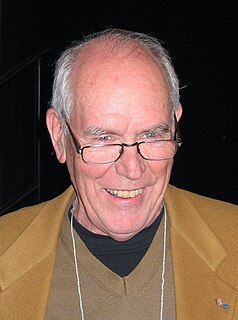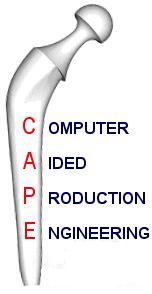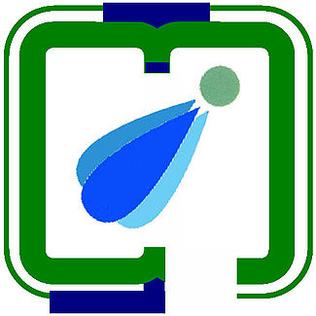
Computer-aided design (CAD) is the use of computers to aid in the creation, modification, analysis, or optimization of a design. This software is used to increase the productivity of the designer, improve the quality of design, improve communications through documentation, and to create a database for manufacturing. Designs made through CAD software are helpful in protecting products and inventions when used in patent applications. CAD output is often in the form of electronic files for print, machining, or other manufacturing operations. The terms computer-aided drafting (CAD) and computer aided design and drafting (CADD) is also used.

A workstation is a special computer designed for technical or scientific applications. Intended primarily to be used by a single user, they are commonly connected to a local area network and run multi-user operating systems. The term workstation has also been used loosely to refer to everything from a mainframe computer terminal to a PC connected to a network, but the most common form refers to the class of hardware offered by several current and defunct companies such as Sun Microsystems, Silicon Graphics, Apollo Computer, DEC, HP, NeXT and IBM which opened the door for the 3D graphics animation revolution of the late 1990s.

Ivan Edward Sutherland is an American computer scientist and Internet pioneer, widely regarded as a pioneer of computer graphics. His early work in computer graphics as well as his teaching with David C. Evans in that subject at the University of Utah in the 1970s was pioneering in the field. Sutherland, Evans, and their students from that era developed several foundations of modern computer graphics. He received the Turing Award from the Association for Computing Machinery in 1988 for the invention of Sketchpad, an early predecessor to the sort of graphical user interface that has become ubiquitous in personal computers. He is a member of the National Academy of Engineering, as well as the National Academy of Sciences among many other major awards. In 2012 he was awarded the Kyoto Prize in Advanced Technology for "pioneering achievements in the development of computer graphics and interactive interfaces".

Apollo Computer Inc., founded in 1980 in Chelmsford, Massachusetts, by William Poduska and others, developed and produced Apollo/Domain workstations in the 1980s. Along with Symbolics and Sun Microsystems, Apollo was one of the first vendors of graphical workstations in the 1980s. Like computer companies at the time and unlike manufacturers of IBM PC compatibles, Apollo produced much of its own hardware and software.
The following outline is provided as an overview of and topical guide to software engineering:
Computervision, Inc. (CV) was an early pioneer in Computer Aided Design and Manufacturing (CAD/CAM). Computervision was founded in 1969 by Marty Allen and Philippe Villers, and headquartered in Bedford, Massachusetts, United States. Its early products were built on a Data General Nova platform. Starting around 1975, Computervision built its own "CGP" Nova-compatible 16-bit computers with added instructions optimized for graphics applications and using its own operating system known as Computervision Graphic Operating System (CGOS). In the 1980s, Computervision rewrote their code to operate on Unix-based platforms.
Prime Computer, Inc. was a Natick, Massachusetts-based producer of minicomputers from 1972 until 1992. With the advent of PCs and the decline of the minicomputer industry, Prime was forced out of the market in the early 1990s, and by the end of 2010 the trademarks for both PRIME and PRIMOS no longer existed

Shenyang Ligong University is a university in Shenyang, Liaoning, China under the provincial government. Its campus is in a new district of Hunnan New District.

Computer-aided production engineering (CAPE) is a relatively new and significant branch of engineering. Global manufacturing has changed the environment in which goods are produced. Meanwhile, the rapid development of electronics and communication technologies has required design and manufacturing to keep pace.
Knowledge-based engineering (KBE) is the application of knowledge-based systems technology to the domain of manufacturing design and production. The design process is inherently a knowledge-intensive activity, so a great deal of the emphasis for KBE is on the use of knowledge-based technology to support computer-aided design (CAD) however knowledge-based techniques can be applied to the entire product lifecycle.
Douglas Taylor "Doug" Ross was an American computer scientist pioneer, and chairman of SofTech, Inc. He is most famous for originating the term CAD for computer-aided design, and is considered to be the father of Automatically Programmed Tools (APT), a programming language to drive numerical control in manufacturing. His later work focused on a pseudophilosophy he developed and named Plex.
Heinz Joseph Gerber was an American inventor and businessman. An Austrian-born Jewish Holocaust survivor who immigrated in 1940, he pioneered computer-automated manufacturing systems for an array of industries. Described as the "Thomas Edison of manufacturing," he was one of the first to recognize and develop the productivity-enhancing potential for computer automation in skill-intensive industrial sectors.

Indian Institute of Information Technology, Design and Manufacturing, Jabalpur, also known as Pandit Dwarka Prasad Mishra Indian Institute of Information Technology, Design and Manufacturing, is an Indian Institute of Information Technology in Jabalpur, Madhya Pradesh, India that focuses on Information Technology enabled Design and Manufacturing. It was declared to be Institute of National Importance by Government of India under IIIT Act.
CADES was a software engineering system produced to support the design and development of the VME/B Operating System for the ICL New Range - subsequently 2900 - computers.

Computer graphics deals with generating images with the aid of computers. Today, computer graphics is a core technology in digital photography, film, video games, cell phone and computer displays, and many specialized applications. A great deal of specialized hardware and software has been developed, with the displays of most devices being driven by computer graphics hardware. It is a vast and recently developed area of computer science. The phrase was coined in 1960 by computer graphics researchers Verne Hudson and William Fetter of Boeing. It is often abbreviated as CG, or typically in the context of film as computer generated imagery (CGI). The non-artistic aspects of computer graphics are the subject of computer science research.
MEDUSA, is a CAD program used in the areas of mechanical and plant engineering by manufacturers and Engineering, Procurement and Construction (EPC) companies. The system's history is closely tied to the beginnings of mainstream CAD and the research culture fostered by Cambridge University and the UK government as well as the resulting transformation of Cambridge into a world-class tech centre in the 1980s.
Sonata was a 3D building design software application developed in the early 1980s and now regarded as the forerunner of today's building information modelling applications.
Shape Data Limited is a computer software company in Cambridge, England that specialises in developing programs for engineering and manufacturing professionals.
Designers have used computers for calculations since their invention. Digital computers were used in power system analysis or optimization as early as proto-"Whirlwind" in 1949. Circuit design theory or power network methodology was algebraic, symbolic, and often vector-based.
Harmony is an experimental computer operating system (OS) developed at the National Research Council Canada in Ottawa. It is a second-generation message passing system that was also used as the basis for several research projects, including robotics sensing and graphical workstation development. Harmony was actively developed throughout the 1980s and into the mid-1990s.








